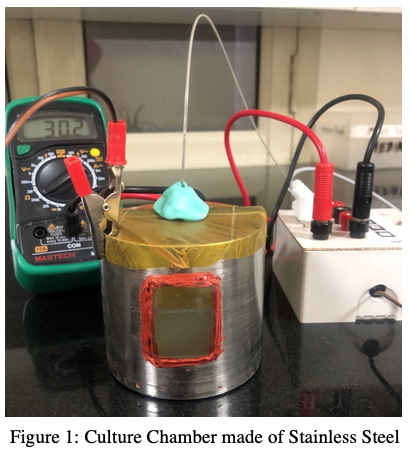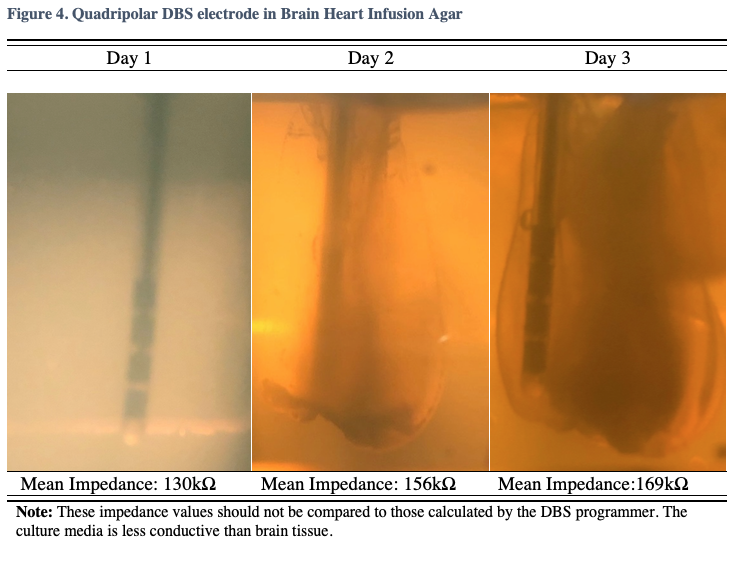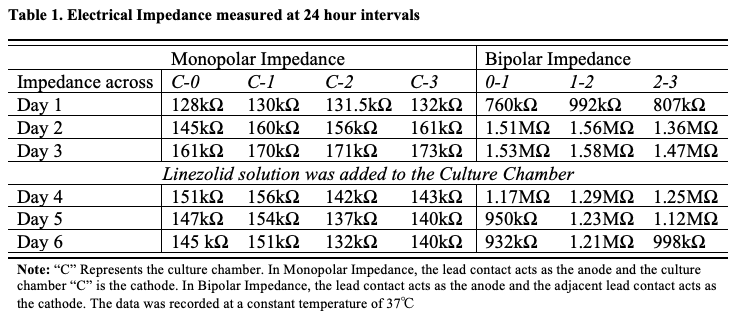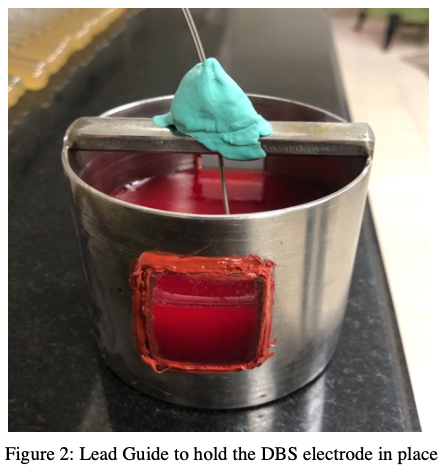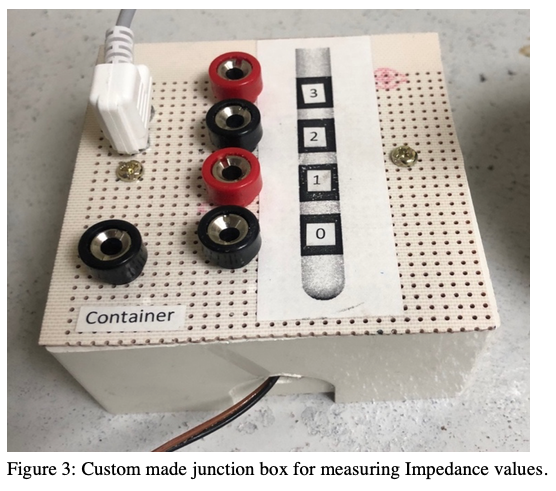Category: Surgical Therapy: Parkinson's Disease
Objective: To analyze the pattern of changing electrical impedance across the contacts of a DBS Lead after a Staphylococcus biofilm formation in an experimental model.
Background: The incidence of DBS hardware related infection varies from 0% to 22% [1]. Infection decreases the effect of DBS leading to symptom resurgence [2]. In a monocentric study of 12 cases of DBS hardware infection, 5 cases (42%) had no Serological and/or CT makers of inflammation [3]. In one of our patients, with GPi targeted DBS for Dystonia, we noticed that the electrical impedance was gradually increasing and the therapeutic effect was diminishing. Serologic and hematologic parameters of an inflammation became positive after 8 weeks of this observation. Intrigued by this phenomenon of increasing impedance and proportionately decreasing therapeutic effects of DBS, we decided to recreated the same conditions in a laboratory environment.
Method: A specially designed stainless steel culture chamber was used, which was electrically conductive, yet chemically neutral [Fig 1]. BHIA 1% Agar was used as a culture media as it was translucent, and had the highest conductivity. A quadripolar DBS lead was used and it’s contacts were dipped in peptone water which had a standard strain of S. aureus. The lead was held in place by a lead guide [Fig 2] and connected to a custom made junction box [Fig 3]. The Impedance was measured across each contact and the culture chamber, and subsequently, across each contact and it’s neighboring contact. The values were recorded at 24 hour intervals, and at a constant temperature of 37℃. 20 ml of Linezolid solution, which was non-conductive, was added to the chamber at Day 3 and subsequent values were noted.
Results: The mean impedance on Day 1 was 130±1.8kΩ, and on Day 3 was 169±5.3kΩ. There was a 29.4% rise in impedance (P<0.05). A biofilm formation could be seen around the DBS lead [Fig 4]. After addition of the Linezolid solution a 16% decrease in electrical impedance was observed over 3 Days [Table 2].
Conclusion: Being able to predict a hardware related infection on the basis of changing impedance would allow an early initiation of an appropriate antibiotic. This will help reduce the frequency of hardware infection related ex-implant surgeries. This study highlights the importance of daily impedance recording within the first few weeks of any DBS procedure or battery replacement.
References: 1. Chou YC, Lin SZ, Hsieh WA, Lin SH, Lee CC, Hsin YL, Yen PS, Lee CW, Chiu WT, Chen SY: Surgical and hardware complications in subthalamic nucleus deep brain stimulation. J Clin Neurosci 2007; 14: 643–639. 2. Bhatia S, Oh M, Whiting T, Quigley M, Whiting D: Surgical complications of deep brain stimulation. A longitudinal single surgeon, single institution study. Stereotact Funct Neurosurg 2008; 86: 367–372. 3. Fily F, Haegelen C, Tattevin P, Buffet-Bataillon S, Revest M, Cady A, Michelet C. Deep brain stimulation hardware-related infections: a report of 12 cases and review of the literature. Clinical infectious diseases. 2011 Apr 15;52(8):1020-3.
To cite this abstract in AMA style:
H. Singh, N. Sawal, V. Gupta, V. Gupta, A. Beri. Using increase in Impedance as a pointer for an early detection of DBS hardware infection [abstract]. Mov Disord. 2020; 35 (suppl 1). https://www.mdsabstracts.org/abstract/using-increase-in-impedance-as-a-pointer-for-an-early-detection-of-dbs-hardware-infection/. Accessed October 20, 2025.« Back to MDS Virtual Congress 2020
MDS Abstracts - https://www.mdsabstracts.org/abstract/using-increase-in-impedance-as-a-pointer-for-an-early-detection-of-dbs-hardware-infection/

